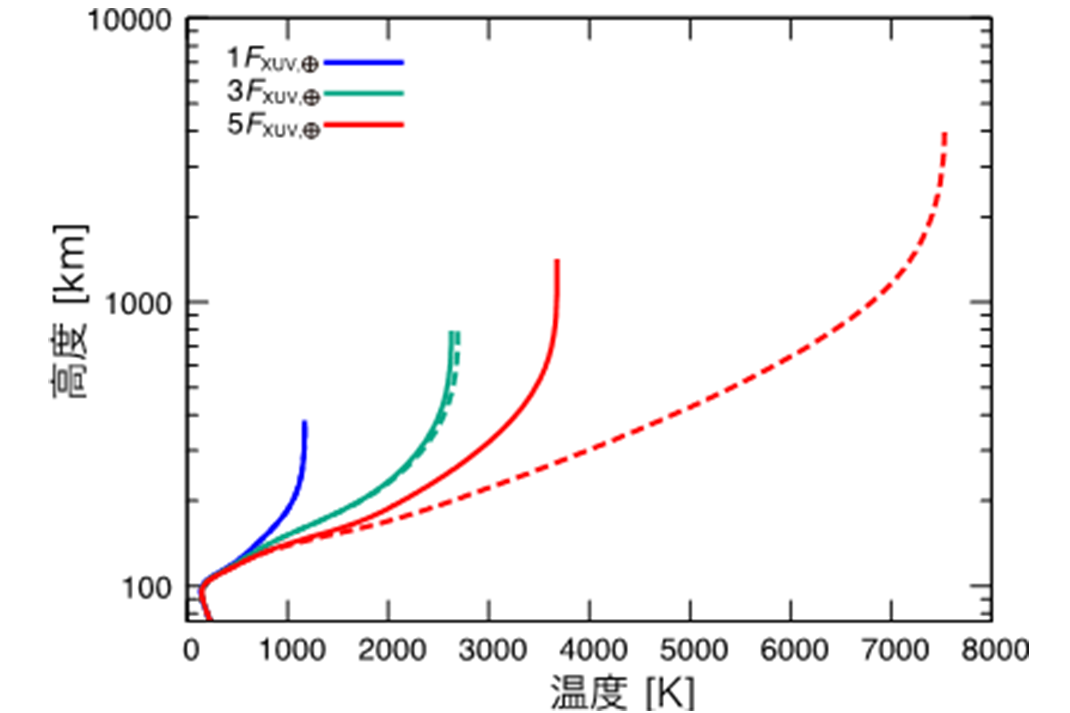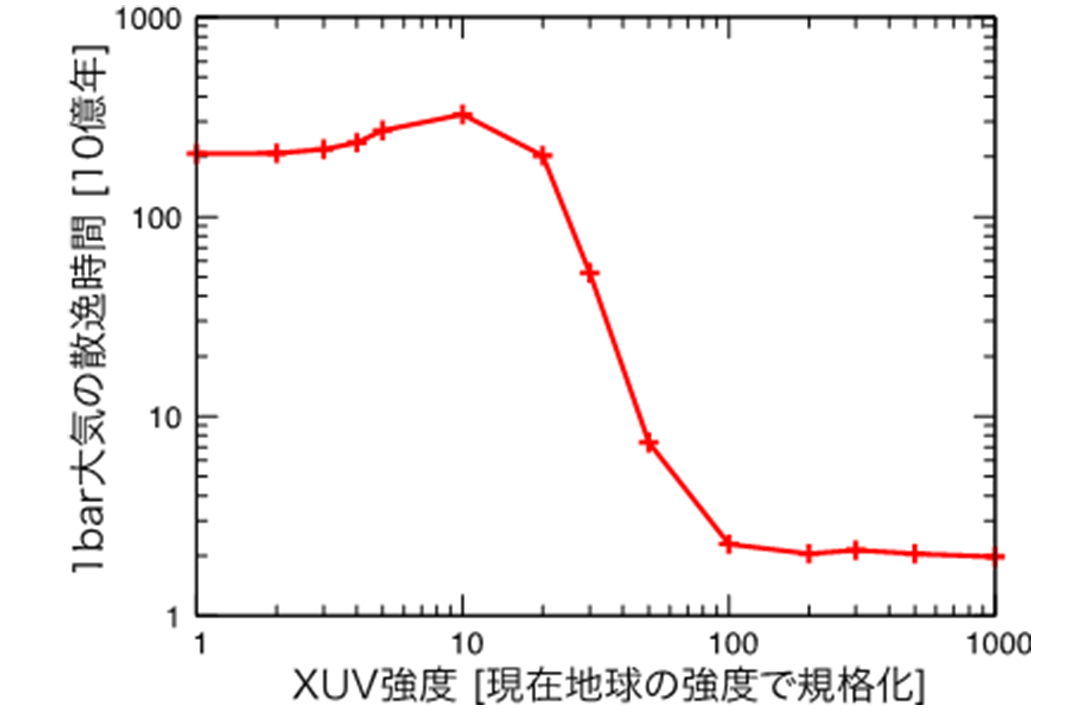OBJECTIVE.
A research team led by Rikkyo University Associate Professor Akifumi Nakayama of the Graduate School of Science has revealed that Earth-like planets might maintain their atmosphere even when exposed to violent X-ray and extreme-ultraviolet (XUV) radiation. This finding was based on an atmospheric simulation of Earth-like planets exposed to violent XUV radiation, which showed that atomic line radiative cooling (cooling via electronic transitions of atoms and ions) provides an important cooling process in such a harsh environment. This suggests Earth-like planets retain an atmosphere and a warm environment, indicating habitable planets could exist beyond the solar system.
1. Background
Earth-like planets exist around low-mass, low-temperature stars (cool stars), which are abundant particularly in the vicinity of the solar system. It has been suggested that cool stars—which likely will be researched further in the future—continue emitting violent XUV radiation for several billion years. Therefore, the existence of planets that maintain a warm environment like Earth was theoretically considered difficult.
2. Results of this research

Figure 1. Effects of atomic line radiative cooling on the upper-atmospheric structure. Temperature profiles simulated with (solid lines) and without (dashed lines) atomic line radiative cooling are shown for three different XUV irradiation levels: one time (blue), three times (green), and five times (red) the present-day Earth’s level, FXUV.

Figure 2. Estimated lifetime of the 1-bar atmosphere at different XUV irradiation levels.
Glossary
*2 XUV spectra: Photon with a wavelength of less than 100 nm and composed of X-rays and extreme-ultraviolet (XUV) radiation. High-energy XUV radiation is absorbed by gas species in the upper atmosphere, leading to photochemical reactions and heating.
*3 Atmospheric escape: The upper atmosphere ceased being in a gravitationally bound state after it was heated by XUV absorption, resulting in the loss of atmospheric gases to outer space. Currently, only light hydrogen and helium atoms escape from Earth’s atmosphere. On Earth-like planets subject to violent XUV radiation, nitrogen and oxygen atoms (their atmosphere’s main components) escape, resulting in loss of the atmosphere.
*4: Atomic line radiative cooling: A radiative process that occurs with the transition in the energy state of electrons rotating around atoms and ions. Energy levels that electrons possess are unique to each atomic or ionic species. Their energy distribution is dependent on the collisional transition that occurs when the electron collides with other gas species as well as on radiative transitions involving the absorption and emission of photons. Radiative transitions to a lower energy state by emitting photon can release energy from the atmosphere to outer space, thus cooling the atmosphere.
Article information:
- Journal: The Astrophysical Journal
- Title: Survival of Terrestrial N2-O2 Atmospheres in Violent XUV Environments through Efficient Atomic Line Radiative Cooling
- Authors: Akifumi Nakayama, Masahiro Ikoma, Naoki Terada
- DOI: 10.3847/1538-4357/ac86ca